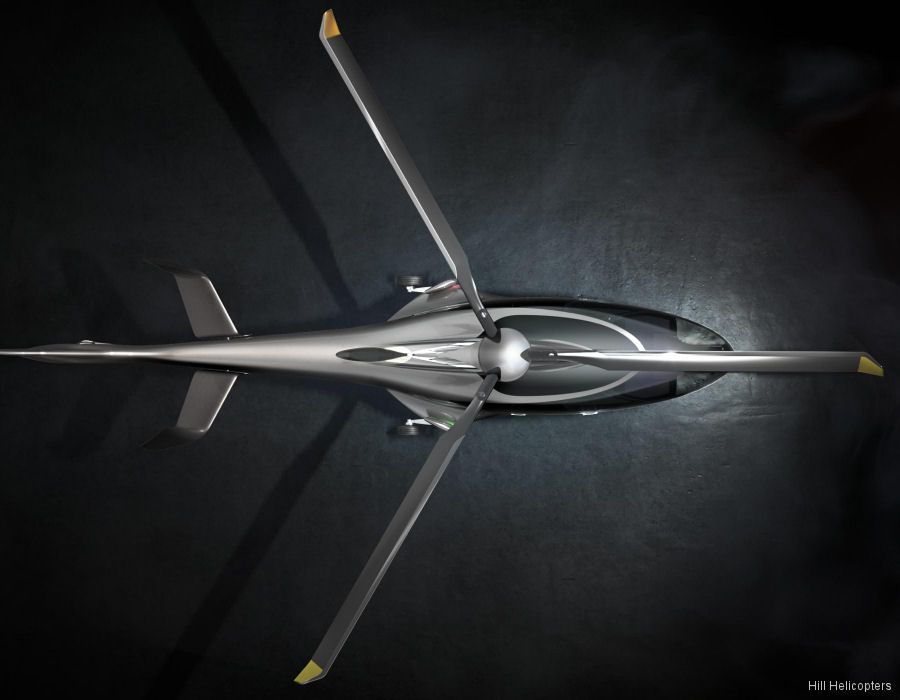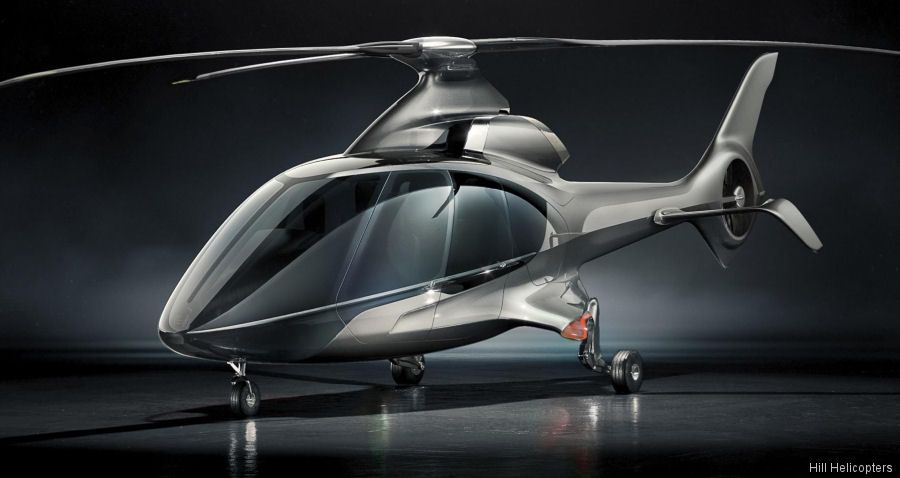Labeled a “disruptive” design, Hill Helicopters announced its HX50, which features a decidedly sleek exterior, three-blade composite main rotor and Fenestron-style ducted tail rotor. The five-seat helo uses an undisclosed turbine engine capable of 500 SHP but limited to 440 SHP for takeoff and 400 SHP maximum continuous. The company says that the HX50 is “the world’s first truly private, luxury helicopter crafted to deliver a whole new experience in safety, performance, adventure, comfort, and elegance. Its composite structure and rotor system, optimized engine, reimagined avionics, and elevated interior design together make the HX50 a high-tech and high-performance personal aircraft,” according to the company.
“The helicopter industry has long awaited an Elon Musk-style disruption that redefines the modern helicopter. The wait is over,” says Dr. Jason Hill, founder and CEO of Hill Helicopters. “The only way to create something that is truly groundbreaking is to design from the ground up, giving equal focus to aerospace design, performance, and safety as well as to the artistic and experiential aspects—including comfort, ergonomics, intuitive technology, and luxury. The HX50 brings all of this together to deliver a truly unique aircraft and experience.”

The HX50 will use a composite fuselage to keep the empty weight to 1,870 pounds against a max-gross weight of 3,630 pounds. Cruise speed is an anticipated 140 KTAS at best, with an economy cruise of 110 KTAS.
Never heard of Dr. Hill? The company says he is a “20-year helicopter pilot [who] founded Hill Helicopters to design the ideal personal luxury helicopter that blends the latest safety and efficient performance technology with a truly luxurious and high-tech experience. Hill received his undergraduate degree in mechanical engineering from Aston University and a Ph.D. in aeronautics from Cranfield University.”
Price? Not yet released, but you have time to save up since the HX50 is in the “advanced design phase” now and will be in flight test by 2022, with deliveries to come the year after.




































Well, yea. Screw the environment if you can afford a turbine helicopter and a pilot.
This press release is everywhere, however, I don’t find the project credible – at least not on the timescales claimed. Why are there only “artist’s impressions” at this late stage? There are no details of the engineering team, no announcement of an engine partner; no details of development funds (other than £1.4m from the UK Govt), no prototypes to see, no models, real or virtual – you’d expect all of this if manufacturing were to commence in 2023? The last clean-sheet 5-seat turbine single from a start-up was the SKY-e (now SH-09). That was well-funded, supported by the engine manufacturer (Honeywell), had a large engineering team and after 18 years and three flying prototypes, ran out of money and still is not certified. By 2018 it had spent CHF420m and was seeking CHF150m to carry the design through certification. However, everything about this aircraft IS credible and having garnered $119m in orders, it was picked up by Leonardo for $185m this year. Will be ever see a new British rotorcraft? I hope so, but to have any confidence, we need to see something far more tangible than this press release!
£1.4m from the UK government? Is there a link with a UK firm?
I think I should know! 🤔
A UK taxpayer
All you need to say is you are in the “advanced design phase” combined with “ price to be announced” and a very, very, veeeerrry optimistic first flight date, supplied with all sorts if futuristic artist renderings, dropping words like “disruptive”, advanced composites, with the CEO a doctor, and you have all the ingredients for another aviation investment money pit that produces great promises but delivers virtually nothing. Nothing new under the aviation sun.
To be “disruptive” this bird will need to be cheaper or faster than its predecessors. But it can’t be faster—there is a finite limit—and after half-a-billion in certification costs (or more), it certainly won’t be cheap.
Difficult to understand how a project this soft makes the news. Would it have appeared here without the pictures ? In any event I’ll entertain heli-porn with a little fib any day, thanks for the article. Over on StartEngine they’ve been pushing a clean sheet tilt rotor called XTI that shames both helicopters and jets that cruise at 350 kts. Their raise is north of 250K with a goal for 1 million from about 250 investors who apparently believe travelers will be greatly relieved to have an alternative to rotorcraft for frequent 400 mile X country trips using a tilt rotor brought to market with 1 million dollars.
I would have at least hoped for fancy curved rotor blades on the picture. Everyone else who wants a modern helicopter has them — it seems guaranteed to reduce noise and increase speed.
With windows 10 pro OS having 3D drawing as a freebie now, it should have been easy to do….
And I thought Musk was famous for all electric powered cars, not turbines burning litres per second.